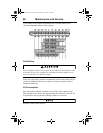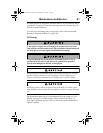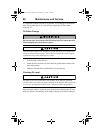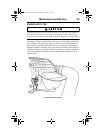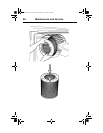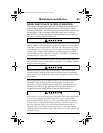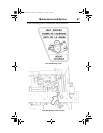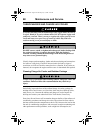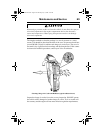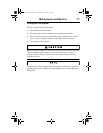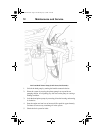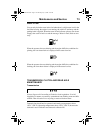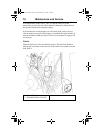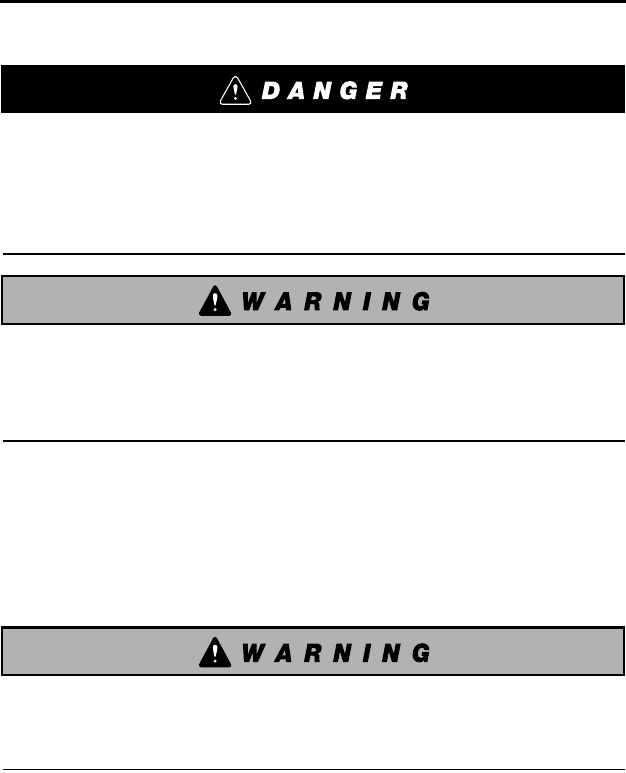
68 Maintenance and Service
TURBOCHARGER AND CHARGE AIR COOLER
If oil leaks internally from the turbocharger to the engine intake, the oil acts
as a fuel. Watch for excessive exhaust smoke. DO NOT operate engine until
problem is corrected. There is no way to regulate the engine speed if it runs
on oil and it may over speed. Loss of control of vehicle may lead to an
accident causing severe personal injury or death.
DO NOT remove, attach, or tighten turbocharger air intake ducting while
the engine is operating, or operate the engine while the ducting is
removed. Working around the turbocharger with the ducting removed
may cause severe personal injury.
Visually inspect turbo mountings, intake and exhaust ducting and connections
for leaks on a daily basis. Check oil inlet and outlet for leaks or signs of
restrictions to oil flow. Check for unusual noise or vibration. If any faults are
detected, do not operate the engine until the cause is determined and repaired.
Cleaning Charge Air Cooler and Radiator Package
Always wear eye protection when cleaning radiator, charge-air cooler and
condenser. Failure to follow this recommendation may result in eye
injury.
Periodically inspect the front of the radiator/charge-air-cooler package for
buildup of dirt, mud, insects, etc. Over time, there may be a build-up of dirt,
mud, insects, etc., between the radiator and charge air cooler. Inspect for
build-up and contact your authorized Volvo Truck dealer, if necessary.
Over time, dirt and insects will accumulate between the fins of the radiator, air
conditioning condenser and charge-air-cooler. The reduced air flow reduces
the heat transfer from the components to the air. This increases the load on the
fan and air conditioning compressor and can result in engine overheating and
other performance related problems, such as high fuel consumption, etc.
USA22978.bk.book Page 68 Wednesday, July 9, 2008 9:09 AM



